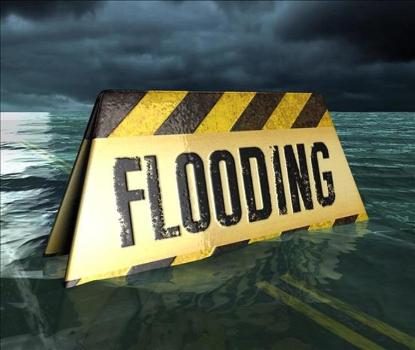The Severe Weather Awareness Week Topic for Wednesday is Floods and Flash Floods. Most years seasonal snowmelt can cause flooding, but flash floods can also impact Minnesotans.
Some areas are more susceptible to flooding said Crookston Fire Fighter Chris Klawitter. “Floods are one of the most common natural hazards in Minnesota,” said Klawitter. “Seasonal snowmelt is obviously one of the main causes of flooding. Those floods tend to develop slowly with a lot of warning. On the other hand, flash floods can develop due to heavy rains or the other thing that can cause flash floods is ice dams during the spring breakup. The risks are obviously the greatest in low lying areas, near existing water whether a lake or a river, behind a levy, or downstream from a dam.”
Klawitter explains the difference between a flood watch and a flood or flash flood warning. “A flood or flash flood watch is issued when conditions exist for possible flooding,” said Klawitter. “A flood warning is issued when flooding is occurring or will occur soon. And a flash flood warning the flash flood is occurring or will occur soon. Whenever the warnings happen it is advisable to be prepared, seek safety or higher ground, and avoid flooded roadways.”
If time permits, there are several steps that can be taken to prepare and protect property. “Be prepared, elevate things in your basement like furnaces, water heaters, anything you store down there that could be damaged by seepage,” said Klawitter. “Install check valves in your sewer traps so you don’t get back up through the sewer lines. Construct barriers or dikes if possible or needed. Seal your basement walls, whatever you can do to keep seepage out. Doing proper grading around your house is another big thing that helps during heavy rains. Have an evacuation plan, and make sure someone knows what your plan is. Make sure you have family and neighbors that are aware if you have to leave, this is where you’re going, so everyone can be accounted for. And have a go-to kit ready with your valuables, important papers, supplies, and whatever else you think you need just in case.”
Never drive through water over the roadway. “If you have to evacuate and time permits – don’t put yourself at risk, if you have to get out, get out – secure your home,” said Klawitter. “Bring in outdoor furniture, move essential items to an upper floor, turn off your utilities. Plan an evacuation route and again inform your families, neighbors, or whomever. The more people who know where you’re going the safer you are so everyone can get accounted for. Do not drive or walk through any moving water. As little as six inches of moving water can carry you away if you’re walking through it and 12 inches will carry a car away. Even a big pickup or SUV can get swept away by 18-24 inches of water. Also, be aware of other hazards like downed powerlines and any other damage like down trees.”
If you did have flooding, making sure to properly clean the property is important for health and safety. “After a flood, only return when it is indicated safe by the authorities,” said Klawitter. “Use caution when entering buildings. Service septic tanks, leaching systems, and all that gets affected by the flood. Clean and disinfect damaged property. And have an alternate plan for sewage and toiletry use.”




